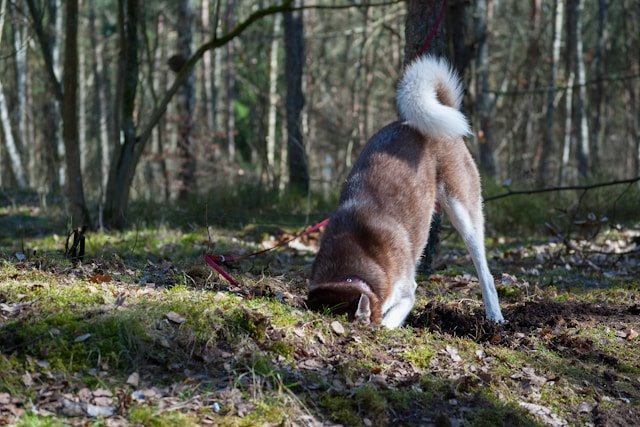
How to Stop a Dog from Digging Holes in the Yard: Practical Tips That Work
You step outside, and there it is—another freshly dug hole in your once-beautiful lawn. Sound familiar?
Digging is a natural behavior for dogs, but it can be frustrating (and destructive) for pet parents. Whether your pup is creating a crater garden or unearthing your flower beds, there’s good news: with the right approach, you can redirect or reduce digging behavior in a healthy, humane way.
Here’s everything you need to know to help your dog kick the digging habit—without punishing or confusing them.
Why Do Dogs Dig?
Understanding why your dog digs is the first step to stopping it. Dogs usually dig for one or more of the following reasons:
Instinct & Breed Traits
Some dogs are simply wired to dig. Breeds like terriers, dachshunds, huskies, and beagles were bred to burrow or hunt small animals. It’s in their DNA.
To Cool Off or Create Shelter
In warm weather, dogs may dig shallow pits to lie in cooler soil. Others dig to create a den-like spot to feel safe or cozy.
Boredom or Lack of Mental Stimulation
If your dog isn’t getting enough physical exercise or mental activity, they may turn to digging as a way to entertain themselves.
Hunting or Chasing Critters
Dogs with a strong prey drive may dig to pursue moles, insects, or other small underground creatures.
Escape Attempts
Some dogs dig near fences or gates in an attempt to escape or explore the world beyond the yard.
How to Stop Your Dog from Digging Holes in the Yard
Now that you know why your dog digs, let’s talk about how to stop it. These methods are gentle, effective, and build trust rather than fear.
1. Increase Exercise and Playtime
A tired dog is a happy dog—and much less likely to dig. Make sure your dog is getting daily walks, fetch sessions, or agility games that engage both body and brain.
- Aim for at least 30–60 minutes of physical activity daily (depending on breed and age).
- Rotate toys regularly to keep things interesting.
2. Provide Mental Stimulation
Dogs that are mentally bored will often turn to mischief. Consider:
- Training sessions that teach new tricks
- Interactive toys like snuffle mats
- Hide-and-seek games using treats
3. Create a Designated Dig Zone
Instead of stopping all digging, redirect it.
- Choose a section of the yard where your dog is allowed to dig (like a sandbox).
- Bury toys or treats in that area to encourage use.
- Praise your dog when they use their dig zone and gently redirect them if they dig elsewhere.
4. Block Access to Favorite Dig Spots
If your dog always digs in the same place:
- Place chicken wire or flat stones just under the soil surface.
- Use scents dogs dislike (like citrus peels) as a deterrent.
- Restrict access with temporary fencing until the habit is broken.
5. Remove the Temptation (Critters or Escape Routes)
If your dog is digging to hunt or escape:
- Contact pest control to safely remove underground pests.
- Reinforce the bottom of fences with buried wire or concrete.
- Avoid leaving your dog outside unsupervised for long periods.
6. Don’t Punish—Redirect Instead
Yelling or punishing your dog for digging doesn’t work and can damage your bond. Instead:
- Catch them in the act and redirect to an approved activity (toy, walk, dig box).
- Reward calm behavior and appropriate digging.
7. Yard-Friendly Alternatives
Looking to protect your lawn and still make your dog happy? Try:
- Building a shaded play area with toys
- Installing a raised garden bed to keep plants safe
- Adding a cool mat or shaded bed for hot days
Photo by Sabbra Cadabra on Unsplash
